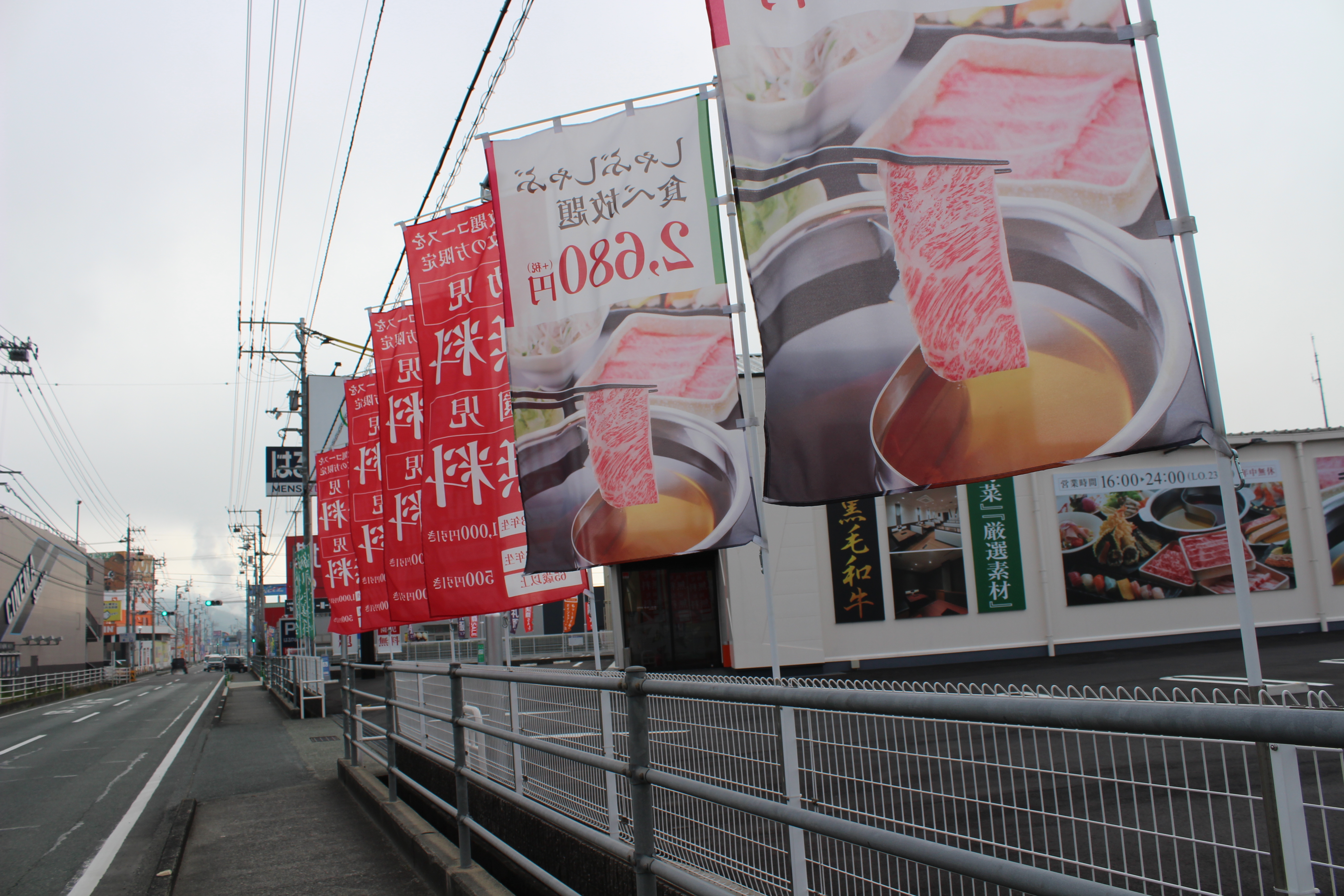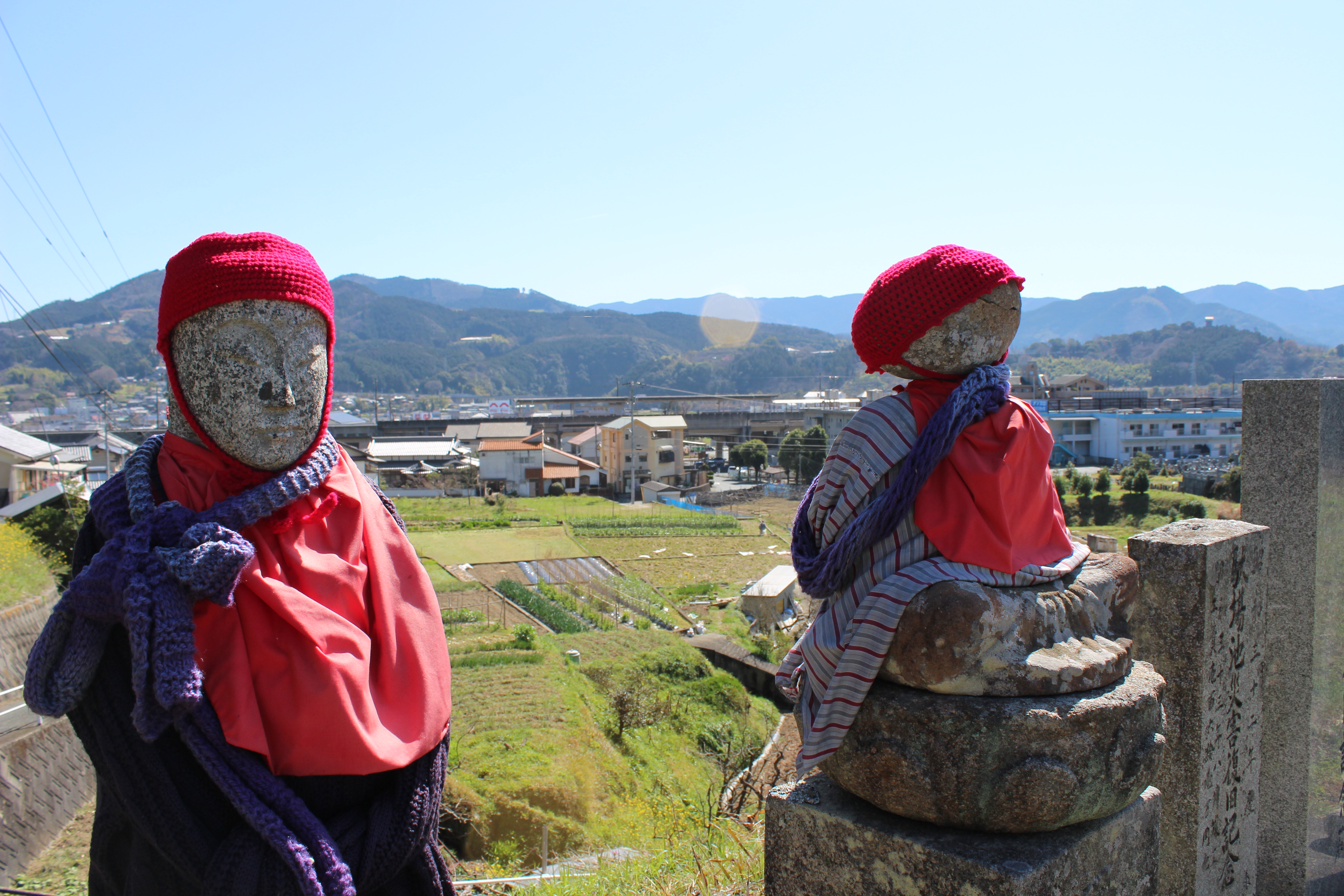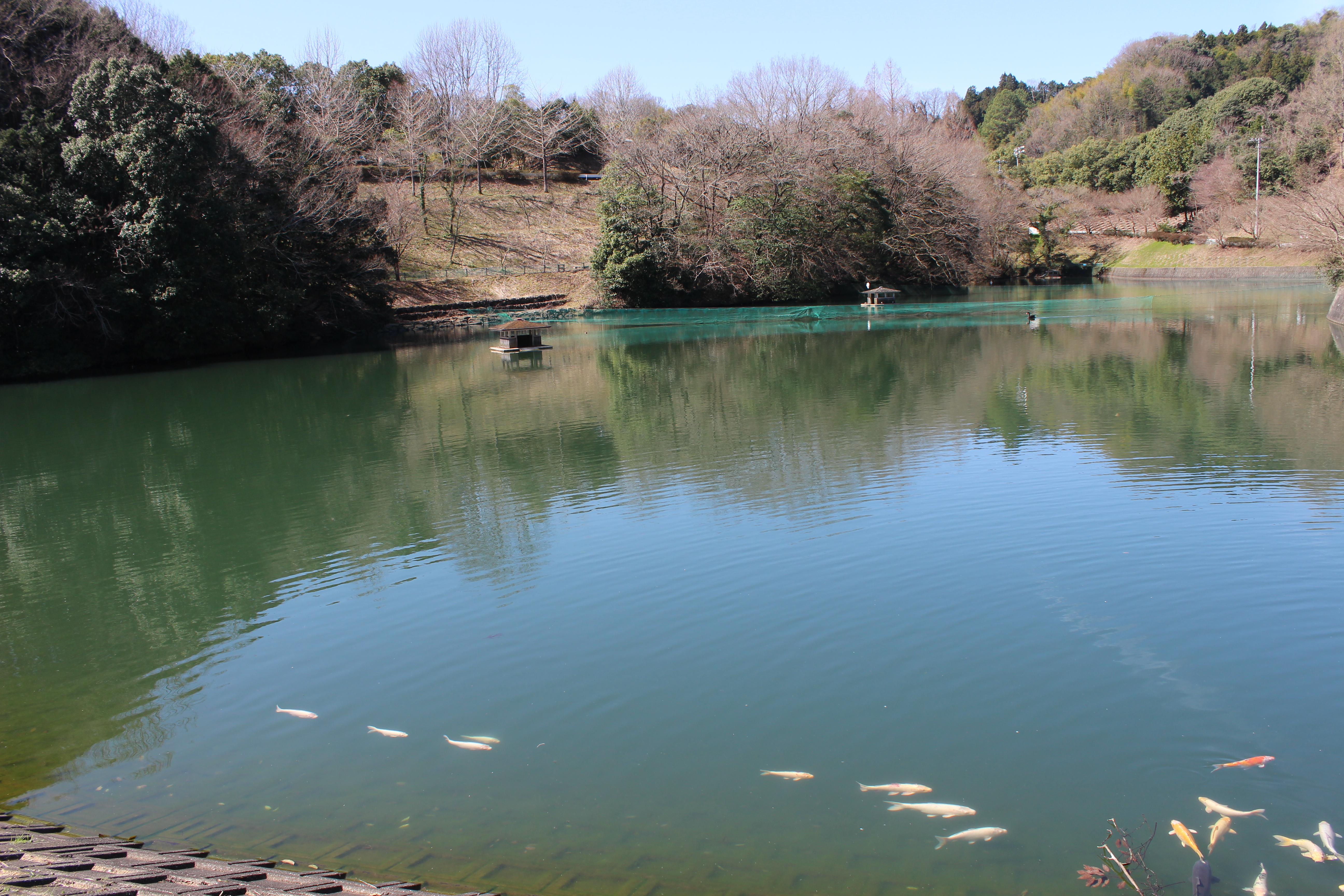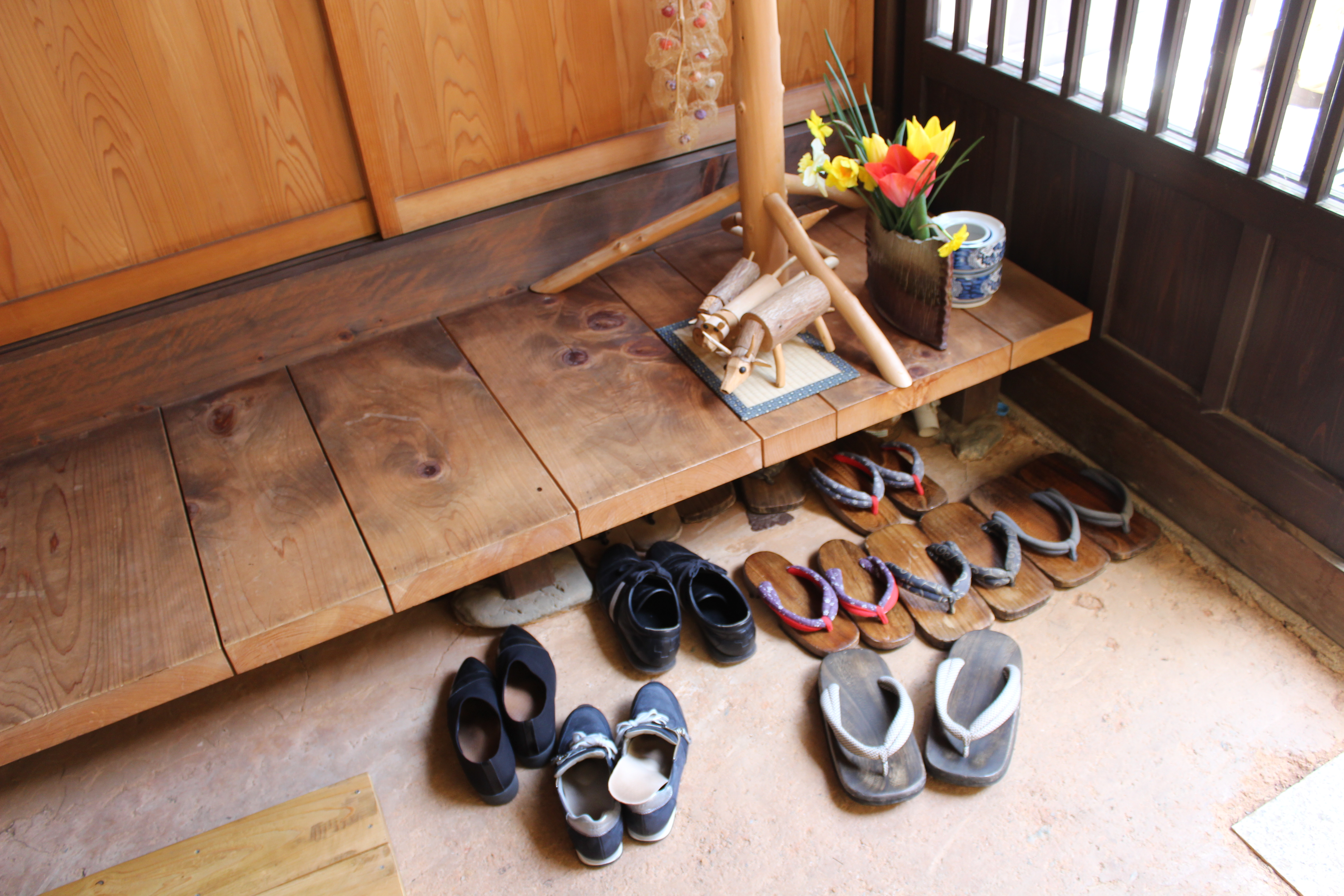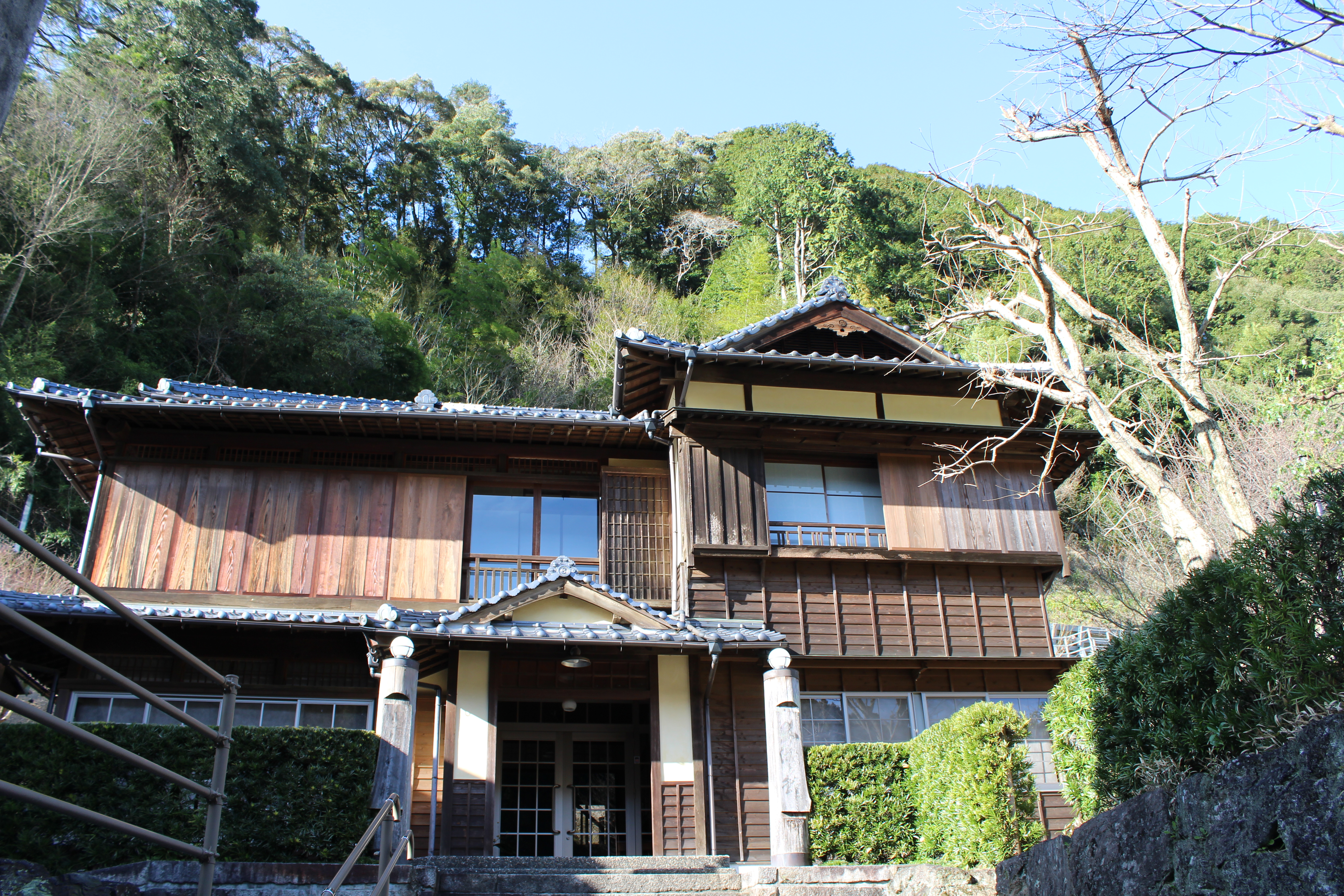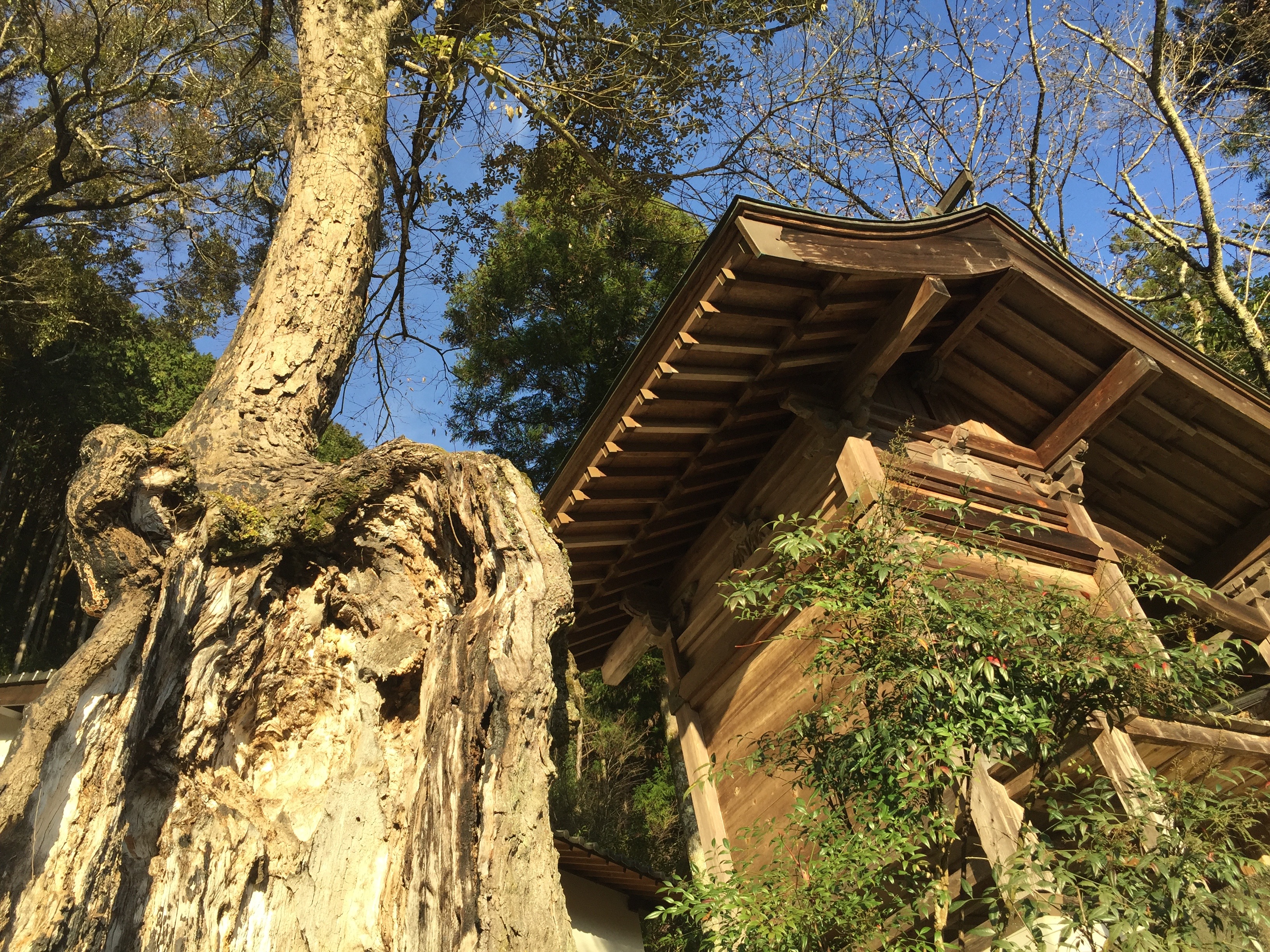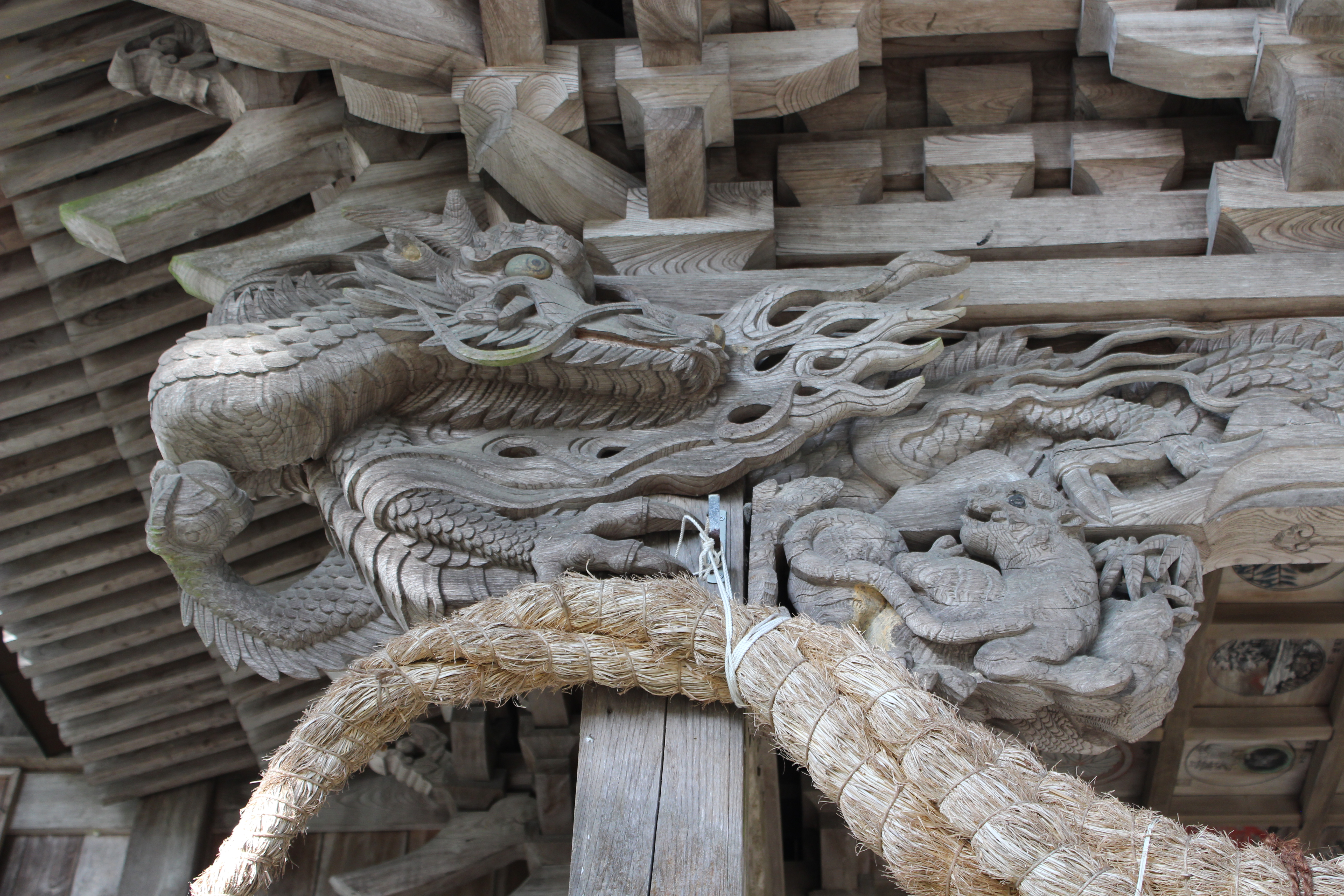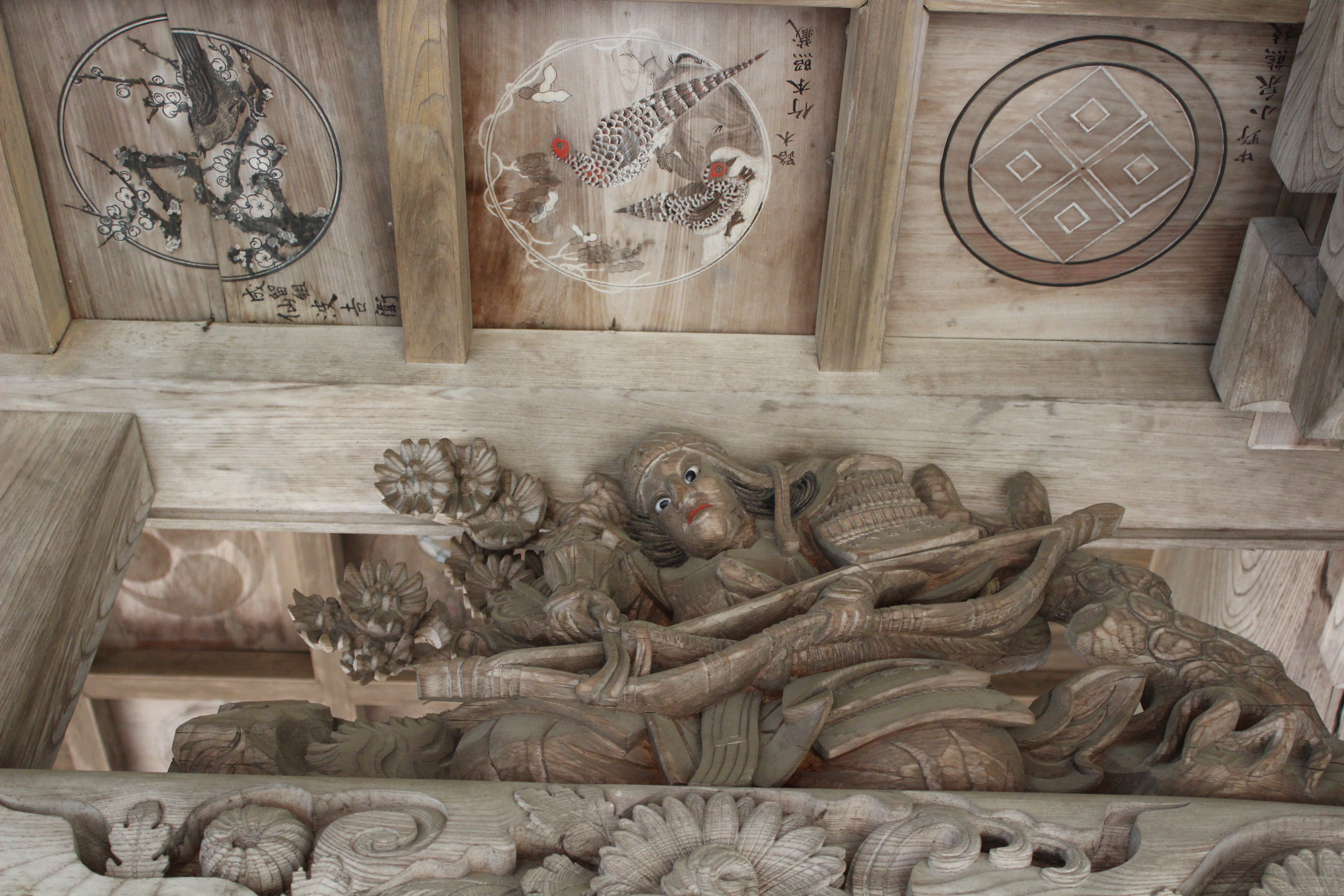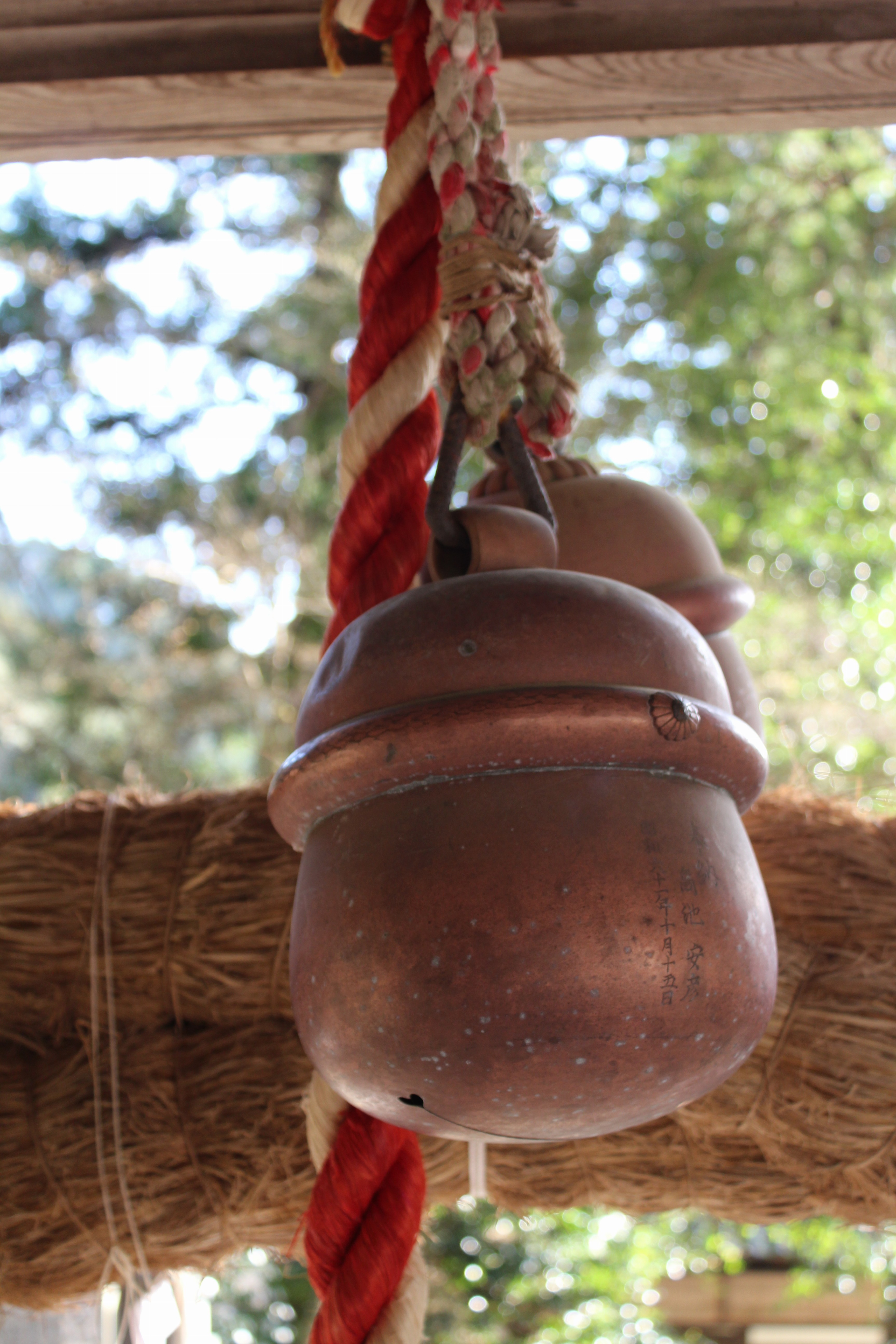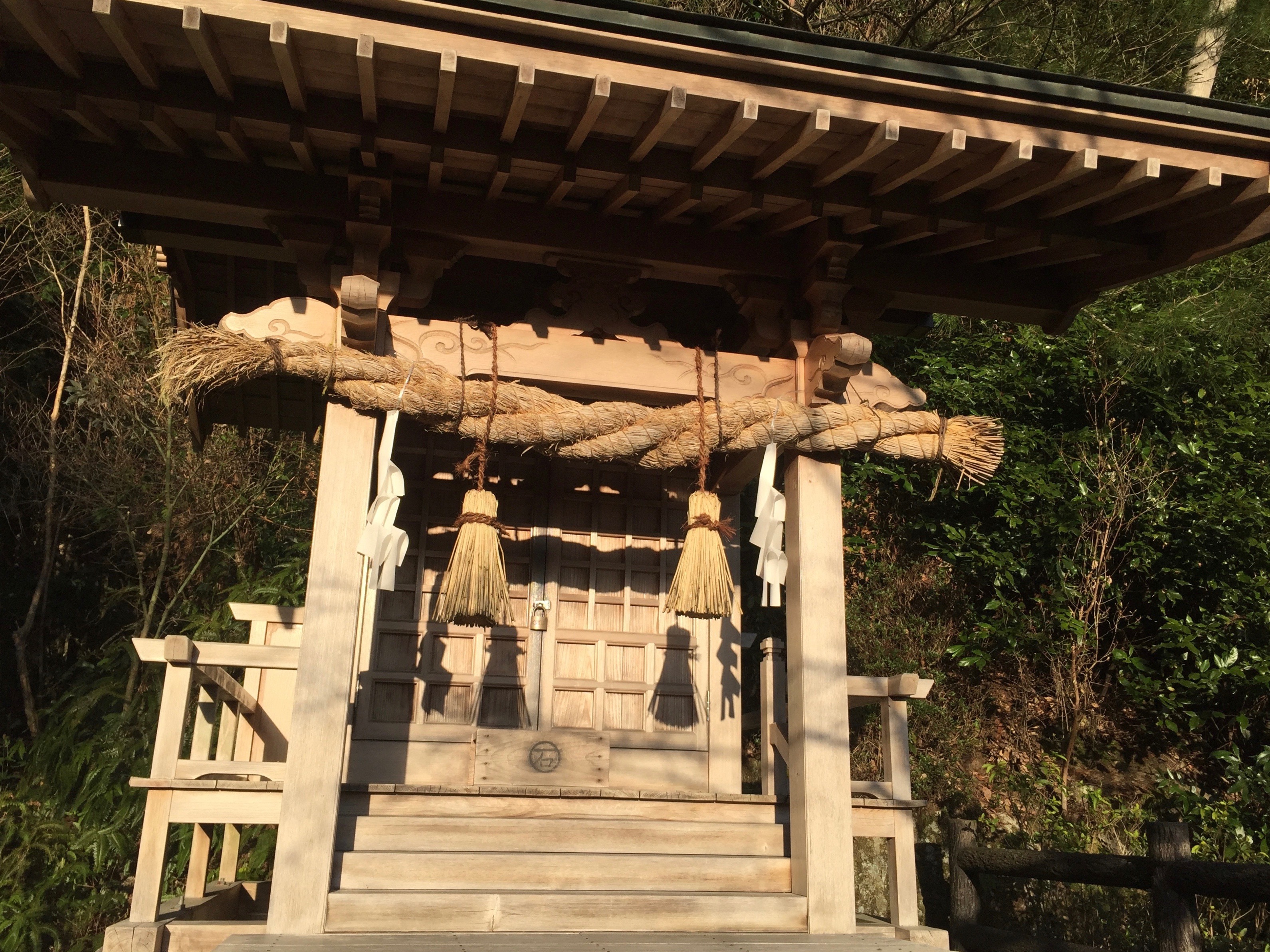The long road of Ōzu City
Walking through towns and densely populated areas of Shikoku was, especially in the
beginning of my pilgrimage, a big challenge.
Street in Ōzu City looking like many other streets in Japanese cities
Colorful flags, big billboards, and electric poles have replaced trees and flowers and
the beauty of nature. It was exhausting walking for hours through a modern city.
However, even in the harsh environment, life could not be stopped – moss, grass
and sometimes a flower were pushing up through a crack of asphalt.
Two Jizō Bosatsus watching over two lakes with Koi fish before Uchiko Town
One of two lakes
In Uchiko town, I walked through a well-preserved merchant street several
hundred of years old. The town got its wealth by manufacturing vegetable wax. In
1972, a groundbreaking preservation movement renovated many old buildings and
Uchiko became the first town in Shikoku to have a designated district for the
preservation of historical buildings.
Uchiko Antique Street
It is absolute crucial not to walk into a Japanese home with street shoes. Slippers are
always provided for guests to use.
For overnight, I stayed in Ōse-no-yakata, a huge traditional Japanese home.
Originally it was the town house of Ōse built in the Meiji era. The house was
prepared for many guests, but I was the only person staying there. Opposite of this
house is the birth place of Kenzaburo Ōe, a famous Japanese writer and Nobel
laureate. He wrote books like “The Silent Cry” and “In the Forest of the Soul”.
Ōse-no-yakata
Ōse was a little treasure along the way. In the evening, I went on discovery and found many beautiful places.
Ancient fir tree hit and cut apart by lightening with a new tree growing out of it and a Shintō shrine beside it.
The hall of the “Toboshigamori -Mishima -Jinja” used for rituals and ceremonial
dances. Famous in the Shintō religion are the kagura performances in combination
with music in order to encourage the kami or God to come down and dance. It has
shamanic origin.
A carpenter called Tomosuke Kadoi did the high skilled woodwork
Fighting woman with bow and arrow surrounded by flowers
Typical Shintō bells for alerting a Kami
A path was winding up behind the main shrine to several little shrines with a top
shrine at the end. Shintō means “the way of the Gods.” In walking up, I felt like
following the footsteps of the Gods.
Top shrine with the Shimenawa, the rope of the Gods, made out of braided rice straw.
Two cords beside two zigzag white paper pieces are attached to the rope.


